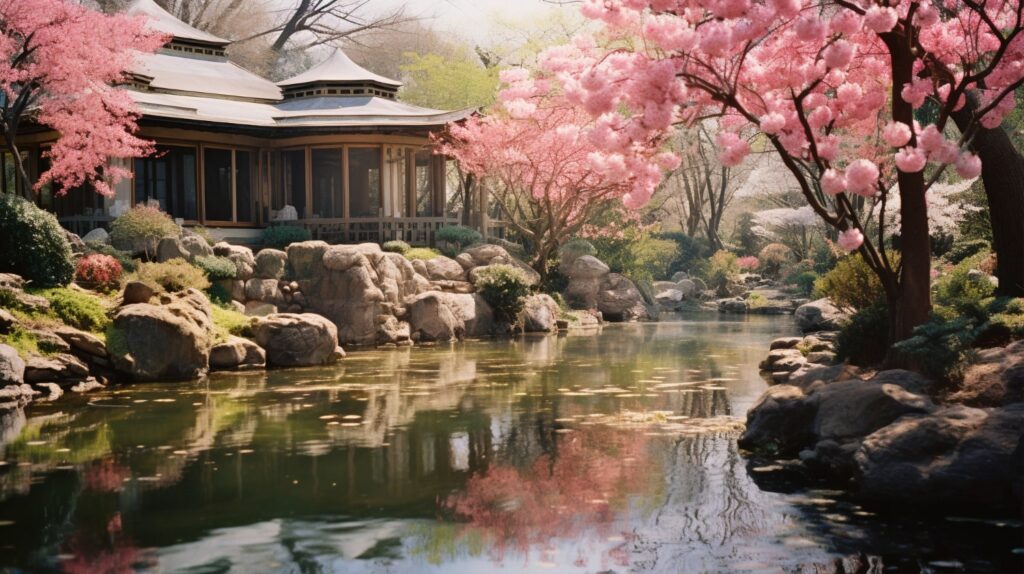Introduction
Stepping into a classic Japanese-style Koi garden is akin to entering a serene oasis where time stands still and nature’s harmony reigns supreme. In this blog, we embark on a journey to discover the essence of traditional Japanese garden design and the captivating allure of Koi ponds within this cultural landscape.

Essence of Japanese Garden Design
Their minimalist yet harmonious design principles make Japanese gardens renowned. They seek to create a seamless blend between natural elements such as water, rocks, and plants, reflecting the tranquility and balance found in nature. In addition, in a classic Japanese-style Koi garden, every aspect of the design is carefully considered to evoke a sense of peaceful serenity.
Symbolism and Meaning
Central to the concept of a Japanese-style Koi garden are the profound symbolism and cultural significance imbued within its elements. From the choice of plants to the arrangement of rocks and water features, each component carries symbolic meaning, often representing concepts such as longevity, prosperity, and harmony.
The Elegance of Koi Ponds
At the heart of a classic Japanese-style Koi garden lies the Koi pond, a tranquil oasis teeming with life and vitality. The elegant beauty of Koi fish gracefully swimming amidst lush aquatic vegetation adds a sense of movement and vibrancy to the garden, while the soothing sound of flowing water enhances its calming ambiance.
Harmonizing Nature and Architecture
Japanese-style Koi gardens seamlessly blend natural elements with architectural features, creating a harmonious union between the built environment and the surrounding landscape. In addition, from traditional wooden bridges to meticulously crafted stone lanterns, each structure serves to enhance the garden’s aesthetic appeal and cultural authenticity.
Cultivating Serenity and Contemplation
A visit to a classic Japanese-style Koi garden is a transformative experience that invites contemplation and introspection. Amidst the tranquil beauty of nature, visitors are encouraged to slow down, reconnect with their surroundings, and find inner peace in the midst of life’s hustle and bustle.
Conclusion
In conclusion, a classic Japanese-style Koi garden is a timeless testament to the enduring beauty of traditional garden design and the profound connection between humanity and nature. With its serene ambiance, symbolic richness, and cultural authenticity, it serves as a sanctuary for the soul—a place where one can find solace, inspiration, and a deeper appreciation for the wonders of the natural world.
Last modified: 4 April, 2024

